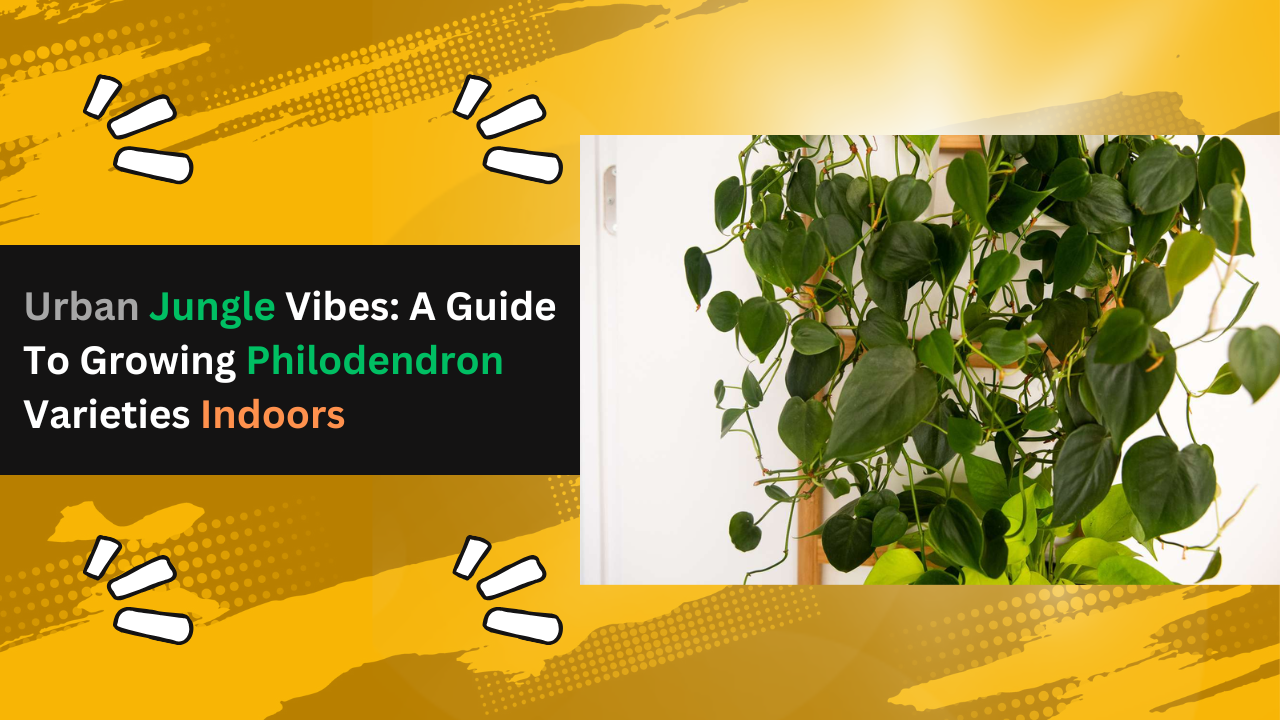Philodendrons are indoor gardeners’ plants because of their lush foliage and relatively easy care. From the classic heart-leaf to a split-leaf and everything in between, their flexible textures and sizes are perfect for adding a touch of the tropics to any home.
This guide will talk about the popular Philodendron varieties and present you with tips on growing them indoors.
A World of Philodendrons: Discovering the Diversity
The Philodendron family is extensive and diverse, with hundreds of species. Here are some examples of a few favorite Philodendron types that do well indoors:
- Heart-Leaf Philodendron (Philodendron hederaceum): This houseplant is an old standard with heart-shaped leaves and trailing vines. Also, it is highly adaptable to many conditions and, therefore, perfect for beginners.
- Split-Leaf Philodendron (Monstera deliciosa): Strictly speaking, this plant is a Monstera, yet most of its care-giving requirements would identify it closely with Philodendrons. With large leaves with deep lobes, it makes quite the statement in any room.
- Pink Princess Philodendron (Philodendron erubescens ‘Pink Princess’): This is one of the most sought-after varieties and comes with dark, almost black leaves accented with striking pink variegation. It is a bit more particular with care, but the reward is incredible foliage.
- Birkin Philodendron (Philodendron ‘Birkin’): Its creamy white variegation against a dark green leaf backdrop brings an elegant touch to each collector’s collection.
- Xanadu Philodendron (Philodendron ‘Xanadu’): This species has compact, bushy growth with deeply divided leaves, making it a great choice for filling empty spots with green lushness.
Creating the Suitable Environment: Light, Water, and Humidity to perfectly frow a Philodendron
There are certain tips that you need to keep in mind if you are interested in growing a Philodendron plant in your home to add more aesthetic to it.
- Bright, indirect light is ideal for philodendrons. It is important to remember that direct sunlight can scorch the leaves of the plant. Watering is essential for Philodendrons. Allow the top inch or two to dry between watering. When the waterlogging happens, root rot occurs. The leaves droop when underwatered. The well-draining potting mix is essential to prevent standing water.
- Use a pot with drainage holes so that water does not pool at the bottom. When your Philodendron begins to grow, it will need repotting into a larger pot, usually once a year or once every two years.
- There are advantages of regular fertilizing during the active summer and spring growing periods. This balanced liquid fertilizer should be diluted to half-strength and used every two to four weeks. Do not fertilize the plant during winter when growth is slow.
- Pruning can be used to shape the Philodendron and may also encourage bushy growth. Clean, sharp scissors or pruning shears are best for cutting off stems and leaves as needed.
- Be on the lookout for the usual houseplant pests, including spider mites, mealybugs, and aphids. Use insecticidal soap or neem oil to treat any infestation that you see.
In a little bit of care, North American Philodendrons can grow indoors. They are beautiful but also clean the air and make the interior healthier, which is why we also recommend using the Yourhomify website to learn about the plant more.
Also Read: https://penwhatmatters.com/goldfish-plant/








